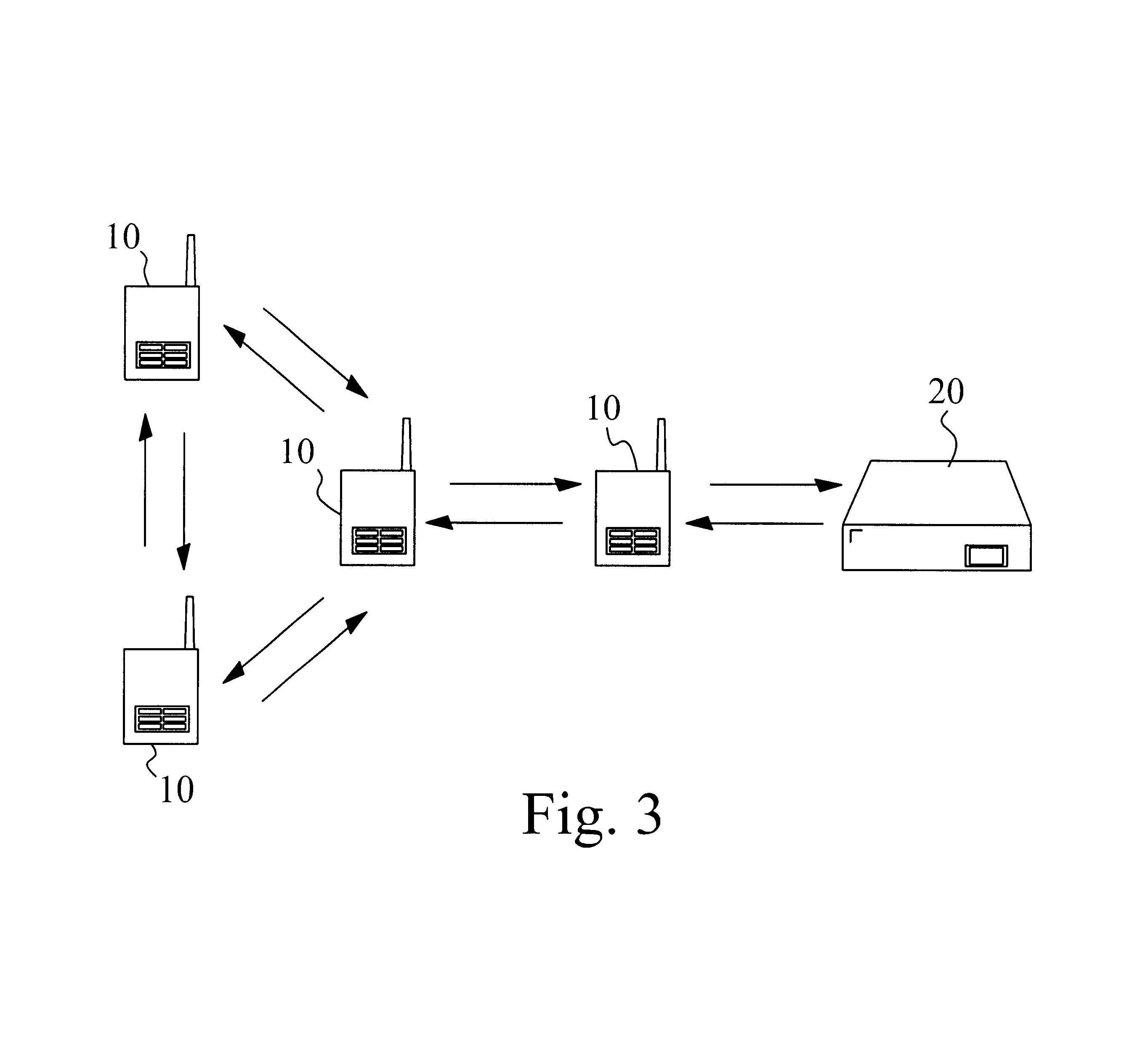Prioritized-routing for an ad-hoc, peer-to-peer, mobile radio access system
a mobile radio access system and priority routing technology, applied in data switching networks, power management, high-level techniques, etc., can solve the problems of reducing not being able to consider the impact of the battery life of the terminal, and not being able to deploy the voice system. , to achieve the effect of reducing the interference between the terminal, reducing the radiated rf energy, and excellent battery li
- Summary
- Abstract
- Description
- Claims
- Application Information
AI Technical Summary
Benefits of technology
Problems solved by technology
Method used
Image
Examples
second embodiment
In a second embodiment, instead of utilizing four battery levels in the algorithm of the invention, there are seven battery levels used and reported.
Battery—A value from 0-7 designating the following battery conditions:
0. IAP;1. Wireless Router;2. Subscriber Device with non-battery power;3. Subscriber Device with nearly full battery (>80%);4. Subscriber Device with battery level (>50%);5. Subscriber Device with battery level low (>20%);6. Subscriber Device (or Wireless Router) with minimal battery (>0%);7. Subscriber Device: Don't Use Ever. This prevention should be capable of being chosen by the network manager remotely.
The following is an example of the routing table messaging used in the present invention incorporating seven such battery status indications.
1 Ad-Hoc Routing Header
Mod ID (8 bits)Msg ID (8 bits)Version (8 bits)TOS (8 bits)Lateral (1 bits)Sequence Num (8)Carrier ID (16 bits)TTL (hops) (7 bits)Source Address (48 bits)Destination Address (48 bits)Payload (X bits)
This i...
example 2
Power Level=+30 dbm, Data Rate=500 kbps.
Cost=10+(+30)+10*log10(8 / 0.5)=40+10*1.2=52
The range for this value is 0-52.Hops—The number of hops to the sender of the RA to the destination.Congestion—The average quantized level of congestion from the sender of the RA to the destination (range 0-7).Mobility—A bit designating whether or not the destination node is currently moving.Ra Heard—A bit designating whether or not the sender of the RA has recently received an RA from the destination being reported.Battery—A value from 0-7 designating the following battery conditions:0. IAP1. Wireless Router2. Subscriber Device with non-battery power3. Subscriber Device with nearly full battery (>80%)4. Subscriber Device with battery level (>50%)5. Subscriber Device with battery level low (>20%)6. Subscriber Device (or Wireless Router) with minimal battery (>0%)7. Subscriber Device: Don't Use Ever. This prevention should be capable of being chosen by the network manager remotely
There are 5 additional ...
PUM
 Login to View More
Login to View More Abstract
Description
Claims
Application Information
 Login to View More
Login to View More - R&D
- Intellectual Property
- Life Sciences
- Materials
- Tech Scout
- Unparalleled Data Quality
- Higher Quality Content
- 60% Fewer Hallucinations
Browse by: Latest US Patents, China's latest patents, Technical Efficacy Thesaurus, Application Domain, Technology Topic, Popular Technical Reports.
© 2025 PatSnap. All rights reserved.Legal|Privacy policy|Modern Slavery Act Transparency Statement|Sitemap|About US| Contact US: help@patsnap.com



